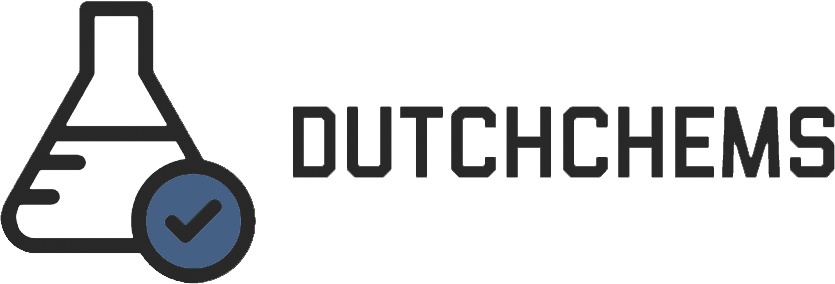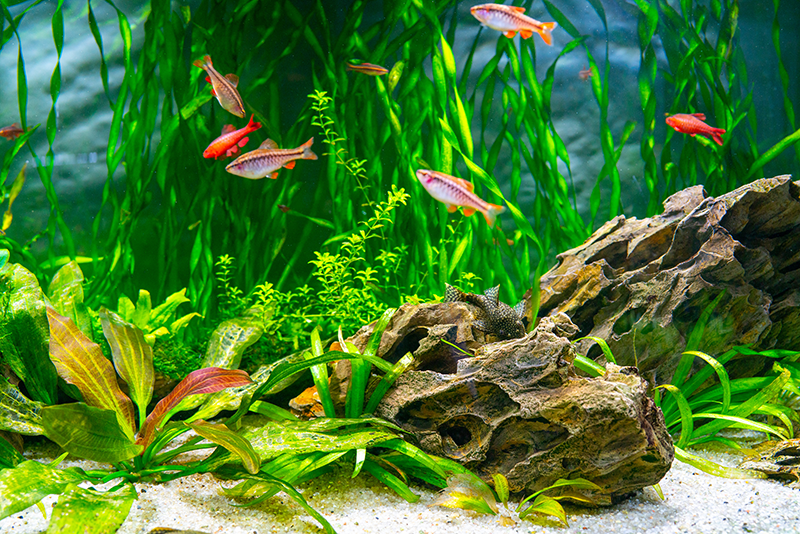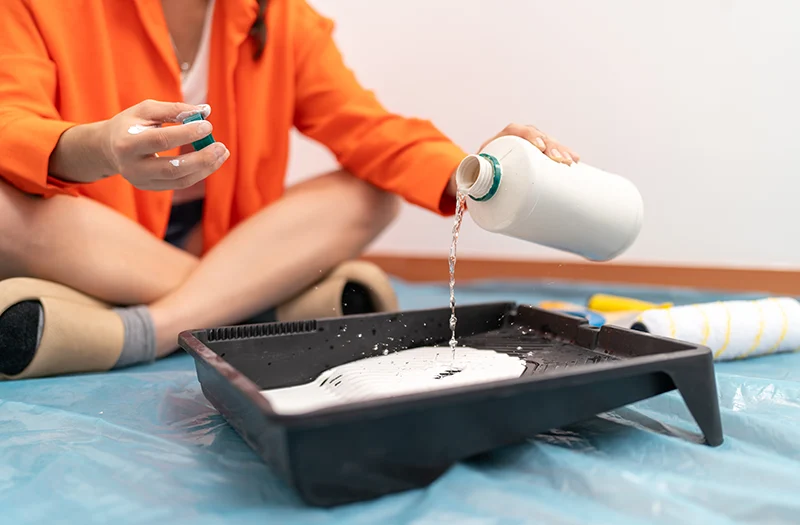The meaning of NPK aquarium fertilization
We make aquarium fertilizer using the so-called NPK. This refers to the essential nutrients that plants need for their growth, in addition to elements such as carbon, hydrogen and oxygen. The three letters in this abbreviation stand for:
- Nitrogen (N), which corresponds to K₂NO₃
- Phosphorus (P), in this case KH₂PO₄
- Potassium (K), used here in the form of K₂SO₄
You can calculate how to put together the ideal aquarium fertilizer with our calculation tool at the bottom of the page.
Each of the above nutrients plays a crucial role in the health of the plants in your aquarium. Below we explain specifically what those roles are.
The importance of nitrogen
Nitrogen is crucial for plant development; without this nutrient they cannot grow. In addition, nitrogen stimulates the growth of bacteria in the aquarium. It is recommended to regularly supply your aquarium with nitrogen. This can be done by adding potassium nitrate to your fertilizer.
The role of phosphorus and the Redfield ratio:
The ratio of phosphorus to nitrogen should be approximately 1 to 10. This is called the so-called Redfield ratio. If you notice green algae spots appearing on the plants, this means that too much phosphorus has been added. You must then provide your aquarium with fresh water. You can add extra phosphorus to your aquarium with the substance potassium phosphate .
Potassium in your aquarium fertilizer
Just like bones, potassium ensures that your aquarium plants grow strong. This substance generally does not need to be added extra because the addition of nitrogen and phosphate already provides sufficient potassium. However, if you still want to add extra potassium to your aquarium fertilizer, you can use the substance potassium sulphate .
Testing aquarium water:
It is important to test your aquarium water weekly and calculate any necessary additives using our calculation tool. It is also useful to ask for advice during meetings for aquarium enthusiasts.
How should you fertilize NPK in your aquarium?
Correctly fertilizing your aquarium with the right ratio of NPK nutrients is not complicated. You can use various test sets to measure the current concentrations. These are available in stores or online at aquarium supply stores. You don’t need to buy an advanced test kit. It’s all fairly guesswork, and you can get started and take measurements with almost any test set.
To keep track of the NPK values in your aquarium, it is best to test your water quality on a fixed day a week and record these, either on paper or digitally. For all tests, pay attention to the expiration date of your test kits; It is recommended to write down the date after opening a set due to the limited shelf life. Please also note that test sets may have a small deviation, up to approximately 3.5 ppm. A drop test is often the most accurate. Don’t forget to measure the water values again after every time you change the water.
Increase nitrate levels
In a well-planted aquarium, the ideal nitrate level is between 10 and 25 ppm . Suppose your goal is 20 ppm, but you only measure 5 ppm. Then the calculation of how much to add is simple:
To go from 5 ppm to 20 ppm you need to increase the level by 15 ppm.
You can calculate the amount of aquarium fertilizer you need to add using the following guideline: 1 ppm is equal to 1 mg per liter. By dissolving your fertilizer in 500 ml of water and using a dosage of 10 ml, you will increase the nitrate level in a 100 liter aquarium by 5 ppm. For an increase to 15 ppm, you need three times as much, which amounts to 30 ml. You can adjust this amount based on the actual size of your aquarium.
With a constant measurement of 5 ppm, you can maintain this dosage every week, provided the plants continue to grow well. Ideally, spread the dosage over several days for a more stable environment, for example by adding 10 ml on Sunday, Wednesday and Friday.
If you measure the value 0 ppm after a week, increase the dosage to 25 ppm and measure again after a few days. This may indicate the need for more frequent dosing. Also check whether your test set is still accurate by using a different brand if necessary.
Reduce excessively high nitrate levels
Too high a nitrate level can result from overfeeding, too high a fish stock, insufficient plant growth or insufficient water renewal. In such cases, changing the water is the only solution. This is especially important in aquariums with large fish such as cichlids, where high nitrate levels are more common.
By following the guidelines in this article, you will ensure optimal growth and health of your aquarium plants, while also maintaining a healthy environment for your fish.
Use the calculation tool below to make the most optimal aquarium fertilizer for the ideal NPK ratios.






